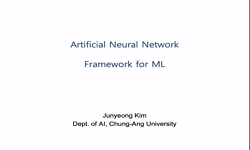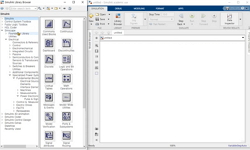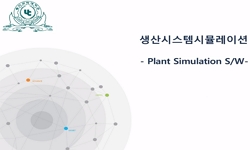인공생명체 연구는 자연 생명과 관련된 시스템이나 그 과정들, 진화 등을 평가해 다양한 응용과학 분야에 활용된다. 이러한 인공생명체의 원활한 활동을 위해 물리적 신체 설계와 행동 제어...
http://chineseinput.net/에서 pinyin(병음)방식으로 중국어를 변환할 수 있습니다.
변환된 중국어를 복사하여 사용하시면 됩니다.
- 中文 을 입력하시려면 zhongwen을 입력하시고 space를누르시면됩니다.
- 北京 을 입력하시려면 beijing을 입력하시고 space를 누르시면 됩니다.
https://www.riss.kr/link?id=A107864614
- 저자
- 발행기관
- 학술지명
- 권호사항
-
발행연도
2021
-
작성언어
Korean
-
주제어
Artificial Life ; Predator-Prey ; Artificial Neural Network ; Simulation ; Genetic Algorithm ; 인공생명체 ; 포식자-피식자 ; 인공신경망 ; 시뮬레이션 ; 유전알고리즘
-
등재정보
KCI등재
-
자료형태
학술저널
- 발행기관 URL
-
수록면
27-35(9쪽)
-
KCI 피인용횟수
0
- DOI식별코드
- 제공처
-
0
상세조회 -
0
다운로드
부가정보
국문 초록 (Abstract)
인공생명체 연구는 자연 생명과 관련된 시스템이나 그 과정들, 진화 등을 평가해 다양한 응용과학 분야에 활용된다. 이러한 인공생명체의 원활한 활동을 위해 물리적 신체 설계와 행동 제어전략을 진화시키는 연구가 활발히 진행되었다. 그러나 형태와 신경망을 공진화시키는 것은 어렵기에 최적화된 움직임을 가진 인공생명체는 한 가지 형태에 한 가지 움직임만을 가지며 주변 환경 상황은 고려하지 않는 것이 대부분이다. 본 논문에서는 포식자-피식자 모델을 이용하여 형태와 신경망을 공진화하는 인공생명체가 환경적응형 움직임을 갖게 한다. 그런 다음 포식자-피식자 계층 구조를 최상위 포식자-중간 포식자-최하위 피식자 3단계로 확장하여 초기 개체군 밀도에 따라 시뮬레이션의 안정성을 판별하며 형태 진화와 개체군 역학 간의 상관관계를 분석한다.
다국어 초록 (Multilingual Abstract)
Artificial life is used in various fields of applied science by evaluating natural life-related systems, their processes, and evolution. Research has been actively conducted to evolve physical body design and behavioral control strategies for the dyna...
Artificial life is used in various fields of applied science by evaluating natural life-related systems, their processes, and evolution. Research has been actively conducted to evolve physical body design and behavioral control strategies for the dynamic activities of these artificial life forms. However, since co-evolution of shapes and neural networks is difficult, artificial life with optimized movements has only one movement in one form and most do not consider the environmental conditions around it. In this paper, artificial life that co-evolve bodies and neural networks using predator-prey models have environmental adaptive movements. The predator-prey hierarchy is then extended to the top-level predator, medium predator, prey three stages to determine the stability of the simulation according to initial population density and correlate between body evolution and population dynamics.
목차 (Table of Contents)
- Abstract
- 요약
- I. Introduction
- II. Preliminaries
- III. Simulation Model
- Abstract
- 요약
- I. Introduction
- II. Preliminaries
- III. Simulation Model
- IV. Simulation result
- V. Conclusions
- REFERENCES
참고문헌 (Reference)
1 조정희, "초기 개체군 밀도가 포식자-피식자 생태계 안정성에 미치는 영향" 한국시뮬레이션학회 22 (22): 1-6, 2013
2 Hanna Koch, "Why rapid, adaptive evolution matters for community dynamics" Frontiers Media SA 2 : 2014
3 N. Cheney, "Unshackling evolution : Evolving soft robots with multiple materials and a powerful generative encoding" 167-174, 2013
4 Alfred J. Lotka, "UNDAMPED OSCILLATIONS DERIVED FROM THE LAW OF MASS ACTION." American Chemical Society (ACS) 42 (42): 1595-1599, 1920
5 Oswald J. Schmitz, "Trophic Cascades in Terrestrial Systems: A Review of the Effects of Carnivore Removals on Plants" University of Chicago Press 155 (155): 141-153, 2000
6 N. Ouannes, "Toward the construction of a virtual ecosystem by evolving virtual creature’s behaviours" 350-355, 2012
7 J. Maynard Smith, "The Stability of Predator-Prey Systems" Wiley 54 (54): 384-391, 1973
8 Thomas W. Schoener, "The Newest Synthesis: Understanding the Interplay of Evolutionary and Ecological Dynamics" American Association for the Advancement of Science (AAAS) 331 (331): 426-429, 2011
9 Takehito Yoshida, "Rapid evolution drives ecological dynamics in a predator–prey system" Springer Science and Business Media LLC 424 (424): 303-306, 2003
10 Y. Seitbekova, "Predator-prey interaction multi-agent modelling" 1-5, 2018
1 조정희, "초기 개체군 밀도가 포식자-피식자 생태계 안정성에 미치는 영향" 한국시뮬레이션학회 22 (22): 1-6, 2013
2 Hanna Koch, "Why rapid, adaptive evolution matters for community dynamics" Frontiers Media SA 2 : 2014
3 N. Cheney, "Unshackling evolution : Evolving soft robots with multiple materials and a powerful generative encoding" 167-174, 2013
4 Alfred J. Lotka, "UNDAMPED OSCILLATIONS DERIVED FROM THE LAW OF MASS ACTION." American Chemical Society (ACS) 42 (42): 1595-1599, 1920
5 Oswald J. Schmitz, "Trophic Cascades in Terrestrial Systems: A Review of the Effects of Carnivore Removals on Plants" University of Chicago Press 155 (155): 141-153, 2000
6 N. Ouannes, "Toward the construction of a virtual ecosystem by evolving virtual creature’s behaviours" 350-355, 2012
7 J. Maynard Smith, "The Stability of Predator-Prey Systems" Wiley 54 (54): 384-391, 1973
8 Thomas W. Schoener, "The Newest Synthesis: Understanding the Interplay of Evolutionary and Ecological Dynamics" American Association for the Advancement of Science (AAAS) 331 (331): 426-429, 2011
9 Takehito Yoshida, "Rapid evolution drives ecological dynamics in a predator–prey system" Springer Science and Business Media LLC 424 (424): 303-306, 2003
10 Y. Seitbekova, "Predator-prey interaction multi-agent modelling" 1-5, 2018
11 N. Ouannes, "Predator-prey coevolution in a physically simulated environment" 1-6, 2015
12 Takashi Ito, "Population and Evolutionary Dynamics based on Predator–Prey Relationships in a 3D Physical Simulation" MIT Press - Journals 22 (22): 226-240, 2016
13 H. Lipson, "On the difficulty of co-optimizing morphology and control involved virtual creatures" (28) : 226-233, 2016
14 F. Veenstra, "How different encodings affect performance and diversification when evolving the morphology and control of 2D virtual creatures" (32) : 592-601, 2020
15 Y.S. Shim, "Generating Flying Creatures using Body-Brain Co-Evolution" 2003
16 K. Sims, "Evolving virtual creatures" 15-22, 1994
17 H. H. Lund, "Evolving robot morphology" 197-202, 1997
18 Karl Sims, "Evolving 3D Morphology and Behavior by Competition" MIT Press - Journals 1 (1): 353-372, 1994
19 Akihiko Mougi, "Evolution towards oscillation or stability in a predator–prey system" The Royal Society 277 (277): 3163-3171, 2010
20 Nicolas Chaumont, "Evolution of sustained foraging in three-dimensional environments with physics" Springer Science and Business Media LLC 17 (17): 359-390, 2016
21 T. Ito, "Emergence of defensive strategies based on predator-prey co-evolution in 3D physical simulation" 890-895, 2012
22 G. F. FUSSMANN, "Eco-evolutionary dynamics of communities and ecosystems" Wiley 21 (21): 465-477, 2007
23 F. Pelletier, "Eco-evolutionary dynamics" The Royal Society 364 (364): 1483-1489, 2009
24 M. H. Cortez, "Coevolution can reverse predator-prey cycles" Proceedings of the National Academy of Sciences 111 (111): 7486-7491, 2014
25 M. Joachimczak, "Co-evolution of morphology and control of soft-bodied multicellular animats" 561-568, 2012
26 P. Maes, "Co-evolution of Pursuit and Evasion II: Simulation Methods and Results" MIT 506-515, 1996
27 X. Tu, "Artificial fishes : Physics, locomotion, perception, behavior" 43-50, 1994
28 Michał Joachimczak, "Artificial Metamorphosis: Evolutionary Design of Transforming, Soft-Bodied Robots" MIT Press - Journals 22 (22): 271-298, 2016
29 Takashi Ito, "ALife approach for body-behavior predator–prey coevolution: body first or behavior first?" Springer Science and Business Media LLC 18 (18): 36-40, 2013
동일학술지(권/호) 다른 논문
-
A Tool for On-the-fly Repairing of Atomicity Violation in GPU Program Execution
- 한국컴퓨터정보학회
- Keonpyo Lee(이건표)
- 2021
- KCI등재
-
Analysis of Deregistration Attacks in 5G Standalone Non-Public Network
- 한국컴퓨터정보학회
- Keewon Kim(김기원)
- 2021
- KCI등재
-
Analysis of Al-Saggaf et al’s Three-factor User Authentication Scheme for TMIS
- 한국컴퓨터정보학회
- Mi-Og Park(박미옥)
- 2021
- KCI등재
-
- 한국컴퓨터정보학회
- Seung-Chul Kwak(곽승철)
- 2021
- KCI등재
분석정보
인용정보 인용지수 설명보기
학술지 이력
| 연월일 | 이력구분 | 이력상세 | 등재구분 |
|---|---|---|---|
| 2026 | 평가예정 | 재인증평가 신청대상 (재인증) | |
| 2020-01-01 | 평가 | 등재학술지 유지 (재인증) |  |
| 2017-01-01 | 평가 | 등재학술지 유지 (계속평가) |  |
| 2013-01-01 | 평가 | 등재학술지 유지 (등재유지) |  |
| 2010-01-01 | 평가 | 등재학술지 유지 (등재유지) |  |
| 2007-01-01 | 평가 | 등재학술지 선정 (등재후보2차) |  |
| 2006-01-01 | 평가 | 등재후보 1차 PASS (등재후보1차) |  |
| 2004-07-01 | 평가 | 등재후보학술지 선정 (신규평가) |  |
학술지 인용정보
| 기준연도 | WOS-KCI 통합IF(2년) | KCIF(2년) | KCIF(3년) |
|---|---|---|---|
| 2016 | 0.44 | 0.44 | 0.44 |
| KCIF(4년) | KCIF(5년) | 중심성지수(3년) | 즉시성지수 |
| 0.43 | 0.38 | 0.58 | 0.15 |





 ScienceON
ScienceON DBpia
DBpia






